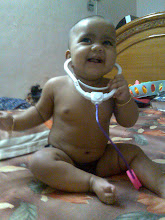WAGON TIPPLING OPERATION:
During the tippling of coal wagon the loaded wagon is pushed on to the tippler plat-form, by pushed away any emptied wagon previously occupying it, and is then weighed. There after the rotation commences through drive unit. The plat-form lifts slowly thereby tilting wagon to rest against side support beam. The rotation of plat-form continuous, and before the plat-form was described 90°, the tippler top stop grips the top of wagon and automatically locks to the end frame, thus holding the wagon. When the plat-form has rotated through approximately 150° ie., fully tippled position is reached, the contents of wagon i.e., coal is discharged into hopper. After completing the operation, the tippler rotates in opposite direction and returns to normal initial position to receive new load wagon.
In general the tippling cycle depicts as
Tippling cycle time and angle:1) Weighing gross -- 90 sec.
2) Tippling -- 10 sec.
3) Pause -- 90 sec.
4) Return -- 10 sec.
5) Weighing Tare -- 90 sec .
Total tippling time 300 sec.
*The angle of tippling is 150 degrees.



















